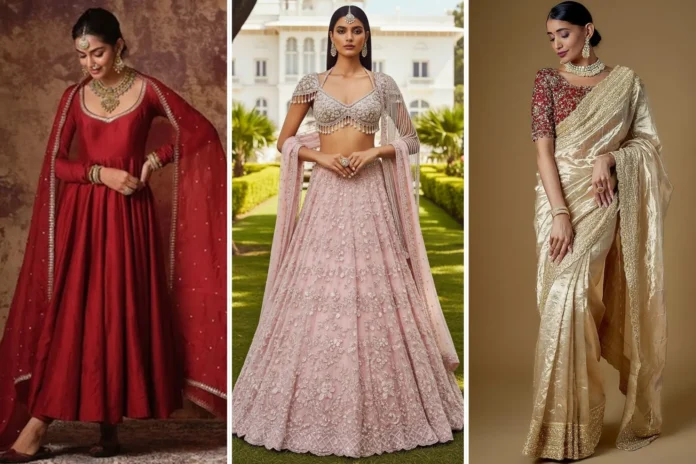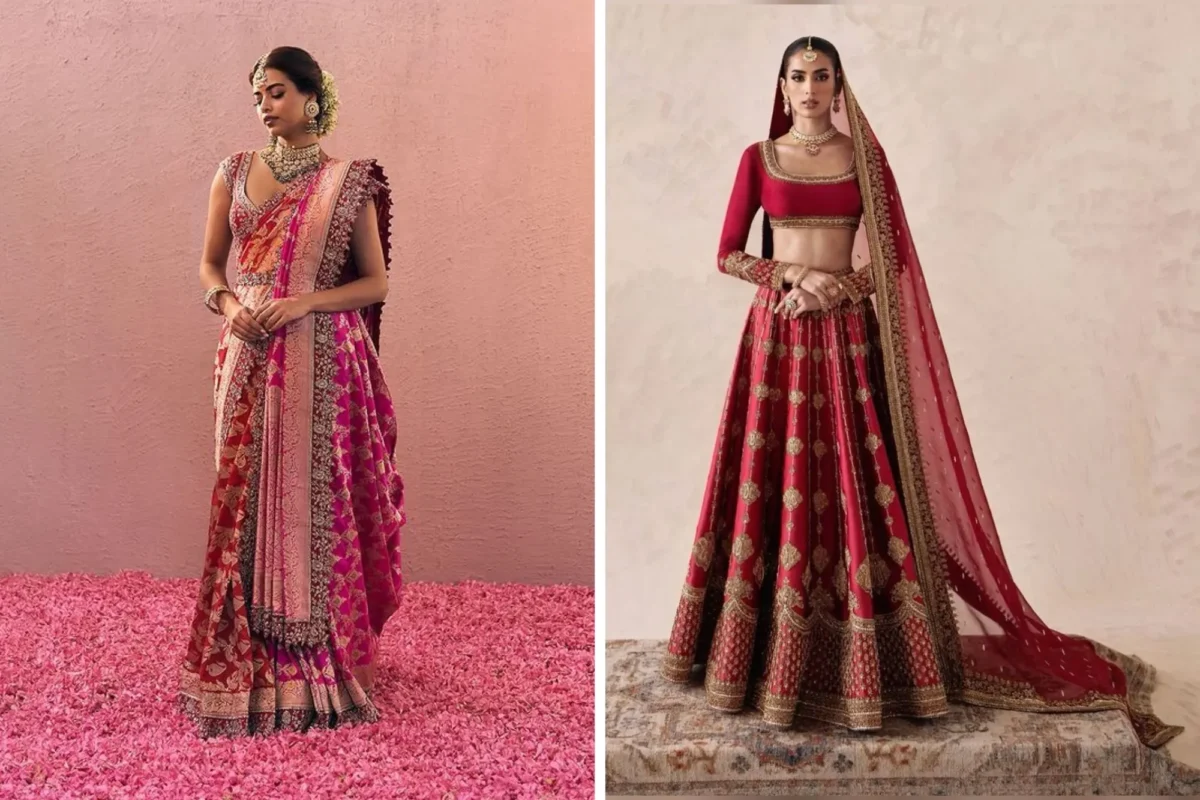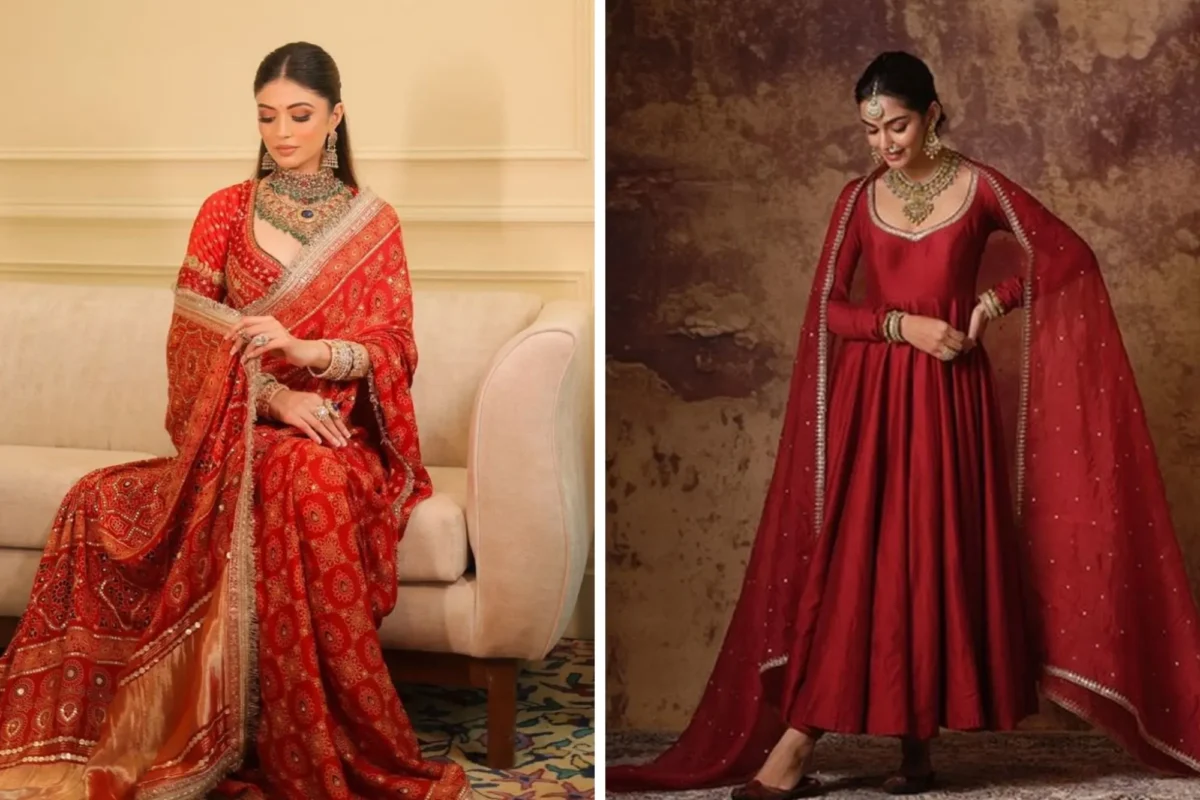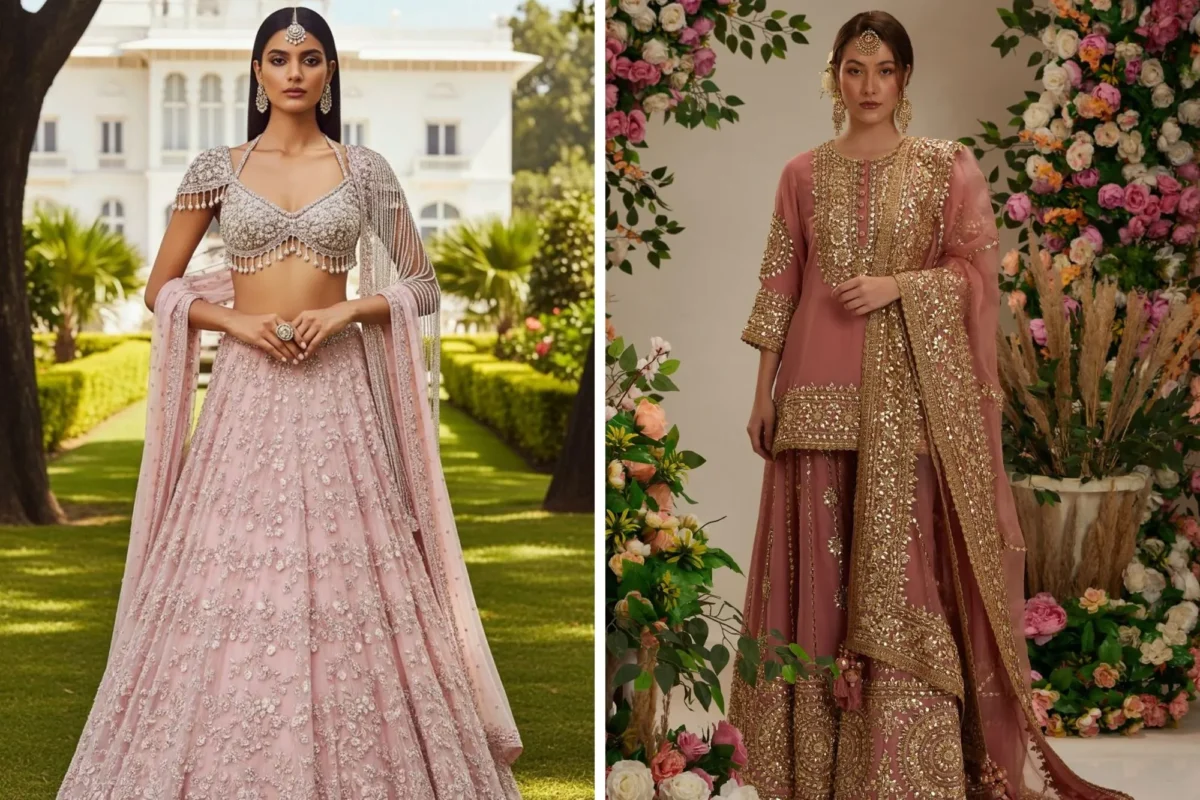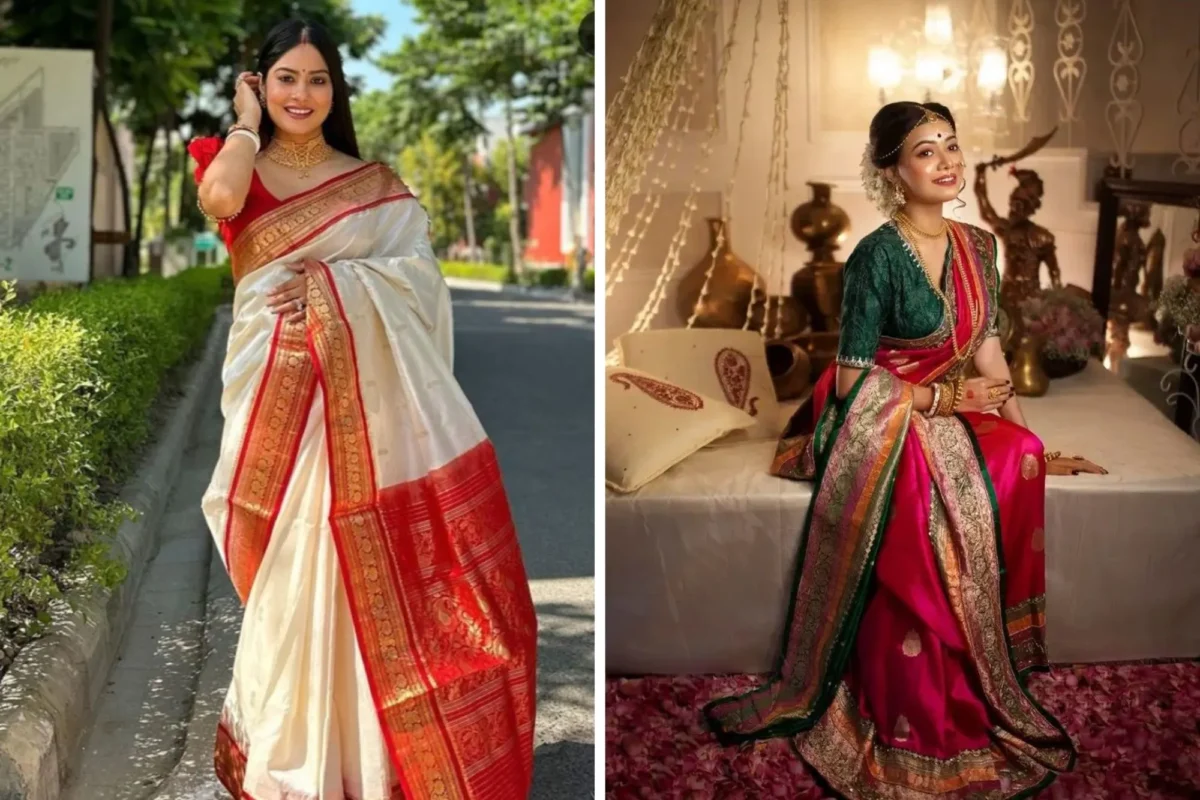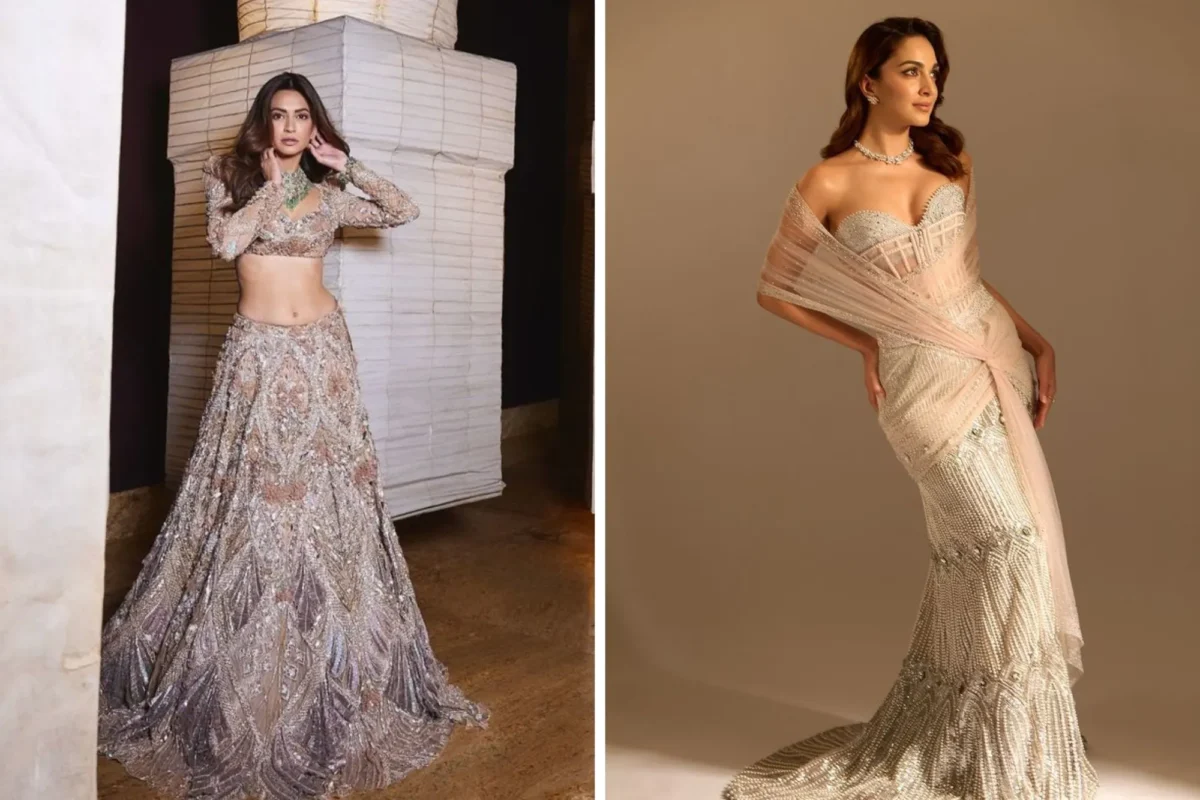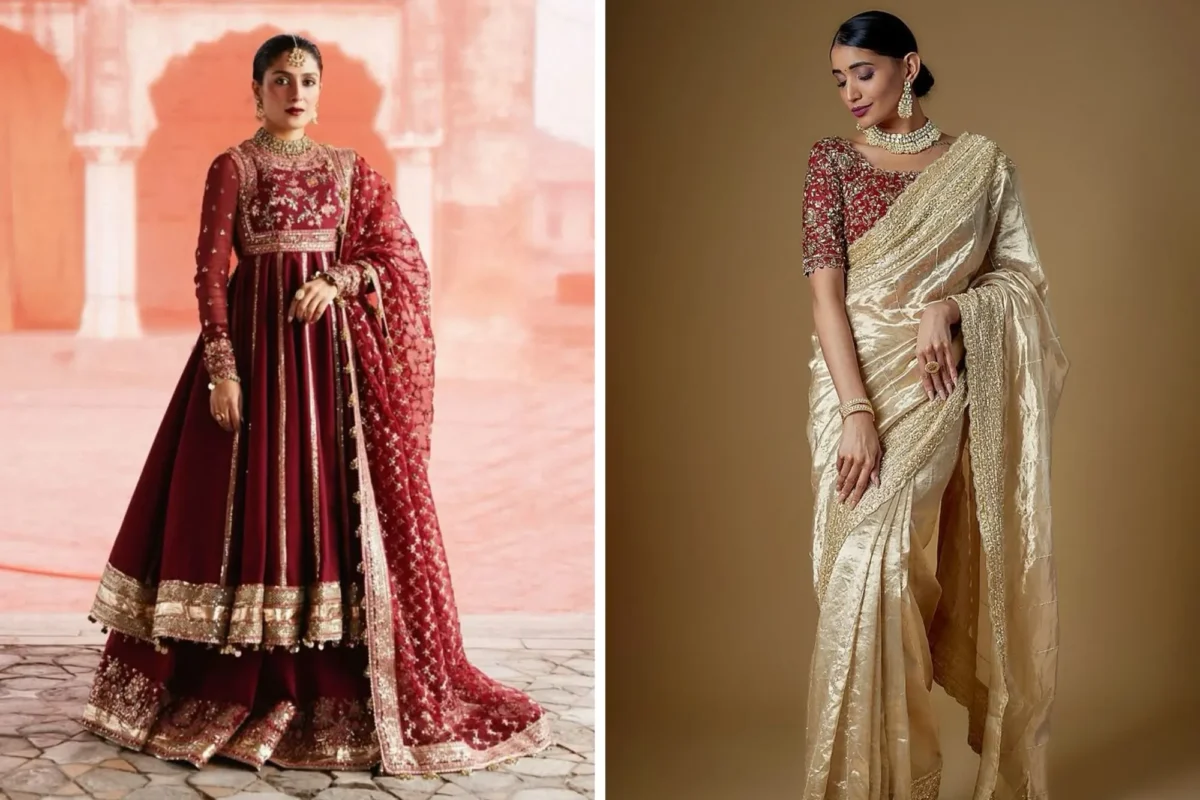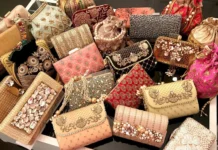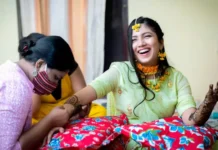From muh dikhai to pag-phera, here are 6 bridal outfit ideas to help you be perfectly dressed for every post-wedding function.
When the wedding day has come and gone, the celebrations don’t stop there. In fact, for many Indian brides, the post-wedding functions are just as special as the big day itself. From the reception to the family dinner, from the bride’s first festival as a married woman to the post-wedding pujas, each event offers a chance to step into another breathtaking look. While the wedding day may have been all about traditional grandeur, these post-wedding moments allow you to experiment with lighter, playful, or even statement-making looks. Choosing the right bridal outfit for each event ensures you remain the star of the celebration while staying comfortable and chic.
If you’re looking for bridal outfit ideas for these occasions, here’s a curated guide for you by Wedding Affair.
Table of Contents
- Vidaai + Griha Pravesh
- Mooh/Muh Dikhai
- Pag Phera / Chauthi
- Bou Bhat (Bengali)
- Reception / Walima
- Post-Wedding Puja / Satyanarayan
Vidaai + Griha Pravesh — The Traditional Welcome Saree or Heirloom Lehenga
Vidaai (the bride’s emotional departure from her parental home) and Griha Pravesh (the bride’s formal entry into the groom’s home) are among the most emotionally charged post-wedding functions. Vidaai is often performed at the wedding venue and immediately followed, in spirit, by the Griha Pravesh rituals at the groom’s house. Griha Pravesh is a ceremonial welcome where the bride is ushered into her new home with aarti, small rituals and blessings.
For a bridal outfit for Vidaai, many brides keep their wedding lehenga or a richly embroidered saree (something symbolic or family heirloom). For Griha Pravesh, choose a saree or lehenga that’s elegant but practical — a Banarasi or Kanjeevaram with secure draping, or a lighter lehenga with a well-stitched dupatta so you can perform rituals comfortably while still looking classically bridal.
Read Also: Shimmer is Back! 7 Sangeet Outfits to Dazzle the Guests
Mooh / Muh Dikhai — Soft Saree or Elegant Anarkali
Mooh (Muh) Dikhai is the post-wedding ceremony where the bride’s veil is lifted and she is formally presented to the extended family — often with gifts, sweets, and blessings. This intimate ritual is usually held at home soon after the wedding and is all about close family, photography, and heartfelt introductions.
Pick a saree with a soft fall (chiffon, georgette, or a light silk) or an Anarkali that allows graceful movement while the veil is lifted. Light embroidery and a defined border read well on camera and don’t overpower the ritual’s warmth, making it a perfect bridal outfit for mooh dikhai.
Pag Phera / Chauthi — Pastel Lehenga or Sharara for the Home Visit
Pag Phera (literally “return of the foot”) describes the bride’s ceremonial return to her parental home after marriage; in many communities, she stays a night or two before returning to the groom’s house. Similarly, Chauthi (common in some traditions) marks a fourth-day visit back to the bride’s family — a sweet capstone visit that reinforces kinship between families. These visits are emotional, cosy, and celebratory.
Go lighter than wedding day — a pastel lehenga, a pretty sharara set, or a pre-draped saree that photographs beautifully but is comfortable for long hugs and home-style hospitality. Soft pastels, florals, and lightweight embroidery are perfect choices for these candid, family-first moments.
Bou Bhat (Bengali) — The Bride’s First-Meal Saree
In Bengali tradition, Bou Bhat (literally “bride feast”) is a post-wedding reception/meal where the bride often dons a new saree and participates in rituals like Bhat Kapor — the groom promises to take responsibility for feeding and clothing her. The bride may serve payesh/kheer to the family as a symbolic welcome into the household. Bou Bhat is festive and photo-centric.
For Bou Bhat, the classic red-and-white Bengal saree (or a red Banarasi) is traditional, but many modern brides choose silk sarees with gold buttas or contemporary handloom weaves as their bridal outfit. Keep the drape authentic (low, pleated) and pair it with traditional jewellery for that unmistakable Bengali bridal silhouette.
Read Also: 7 Latest Designer Bridal Collection You Need to See
Reception / Walima — Statement Gown or Indo-Western Ensemble
Receptions (Hindu) and Walima (Muslim reception celebration) are public, social post-wedding events where the couple is formally introduced to broader circles. These functions are glamorous and are the perfect place for a show-stopping bridal outfit that reads modern and photogenic.
Statement gowns, cape gowns, heavy Indo-Western lehengas, or sari-gowns work brilliantly as a bridal outfit for the reception. Think structured silhouettes with rich embellishment — champagne sequins, deep jewel tones, or high-shine embroidery — paired with dramatic makeup and luxe accessories.
Post-Wedding Puja / Satyanarayan / Blessings — Serene Anarkali or Handloom Saree
Many families perform a post-wedding puja (Satyanarayan Katha, blessings, or house-invocation rites). These are devotional and often quiet gatherings that require a respectful, modest look.
Choose an elegant Anarkali or a good-quality handloom saree (Kanjeevaram, Tussar or Banarasi, depending on region) in auspicious hues for the bridal outfit. Keep jewellery traditional but not overpowering — a light maang tikka, small jhumkas, and a delicate mangalsutra (if worn) make this look ceremony-appropriate.
FAQs
- How many outfits should a bride plan for post-wedding functions?
Most brides prepare 5–8 outfits to cover Vidaai, Griha Pravesh, Mooh Dikhai, Pag Phera/Chauthi, Bou Bhat, Reception/Walima, and small home pujas. Consider one heirloom/statement piece, a few lighter day looks, and a reception ensemble. - Can the same bridal lehenga be restyled for multiple post-wedding events?
Yes — rework the blouse, swap the dupatta, or pair the skirt with a short jacket or cape to repurpose a heavy bridal lehenga into multiple bridal outfit ideas. - Which fabrics photograph best across post-wedding events?
Silks (Banarasi, Kanjeevaram), georgette and chiffon sarees, and well-stitched satins photograph beautifully. For daytime home visits, lightweight fabrics with subtle embroidery work best.
Read Also: Different Saree Draping Styles for Brides
Whether it’s a grand reception or an intimate brunch, these Indian bridal outfits offer endless inspiration for newlyweds. Remember, each outfit you wear after your wedding is another chance to shine as the bride—and these ideas will keep you glowing through every celebration.
Subscribe to Wedding Affair for everything wedding.

